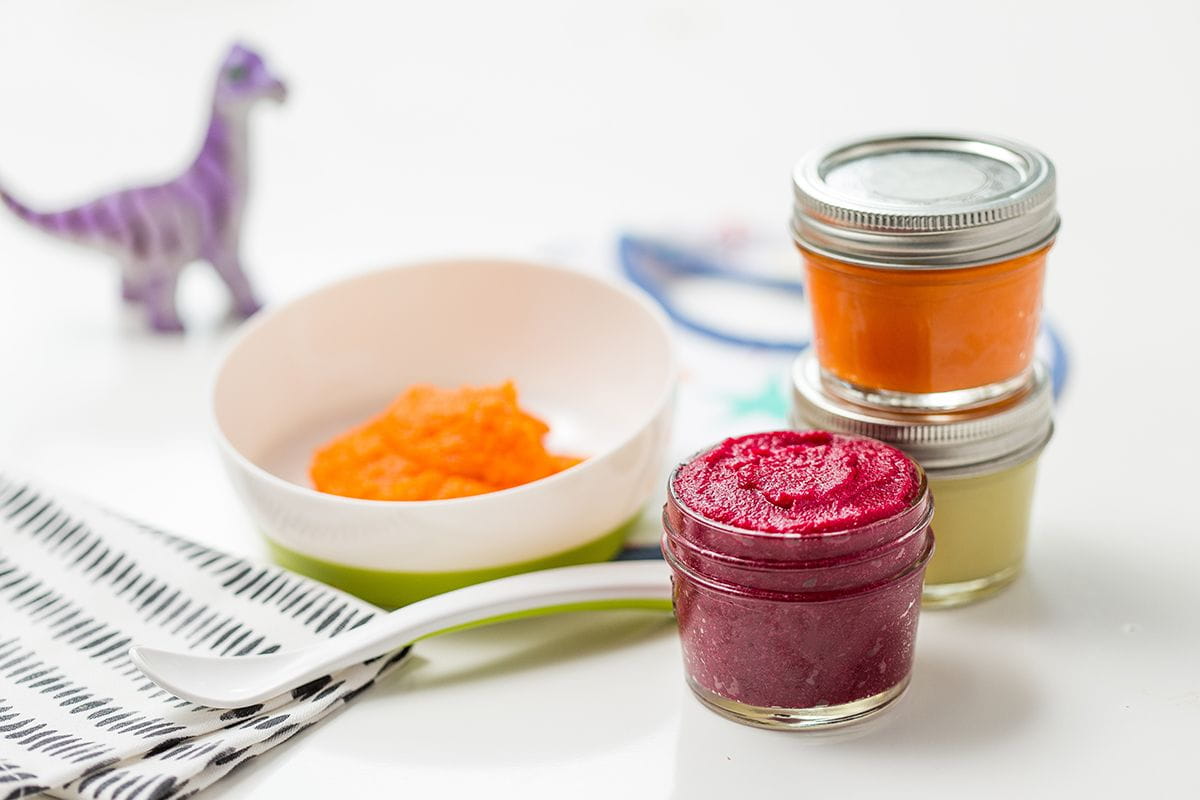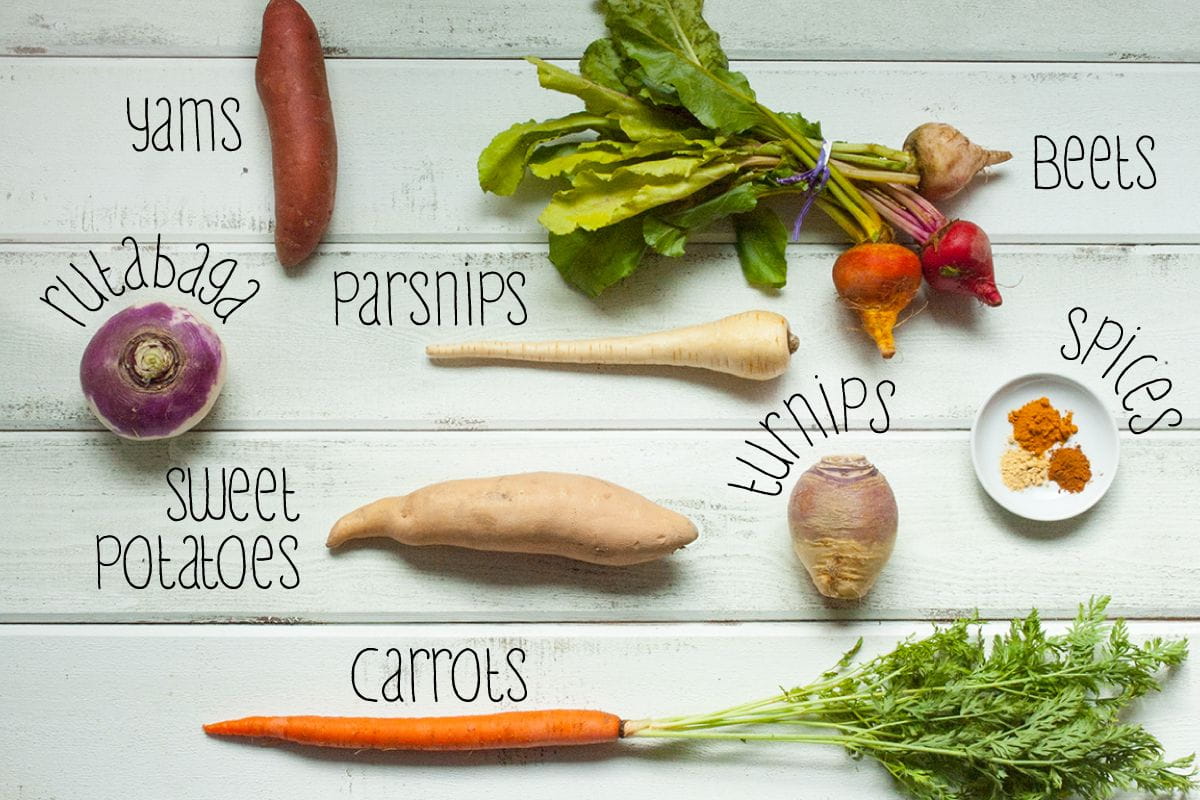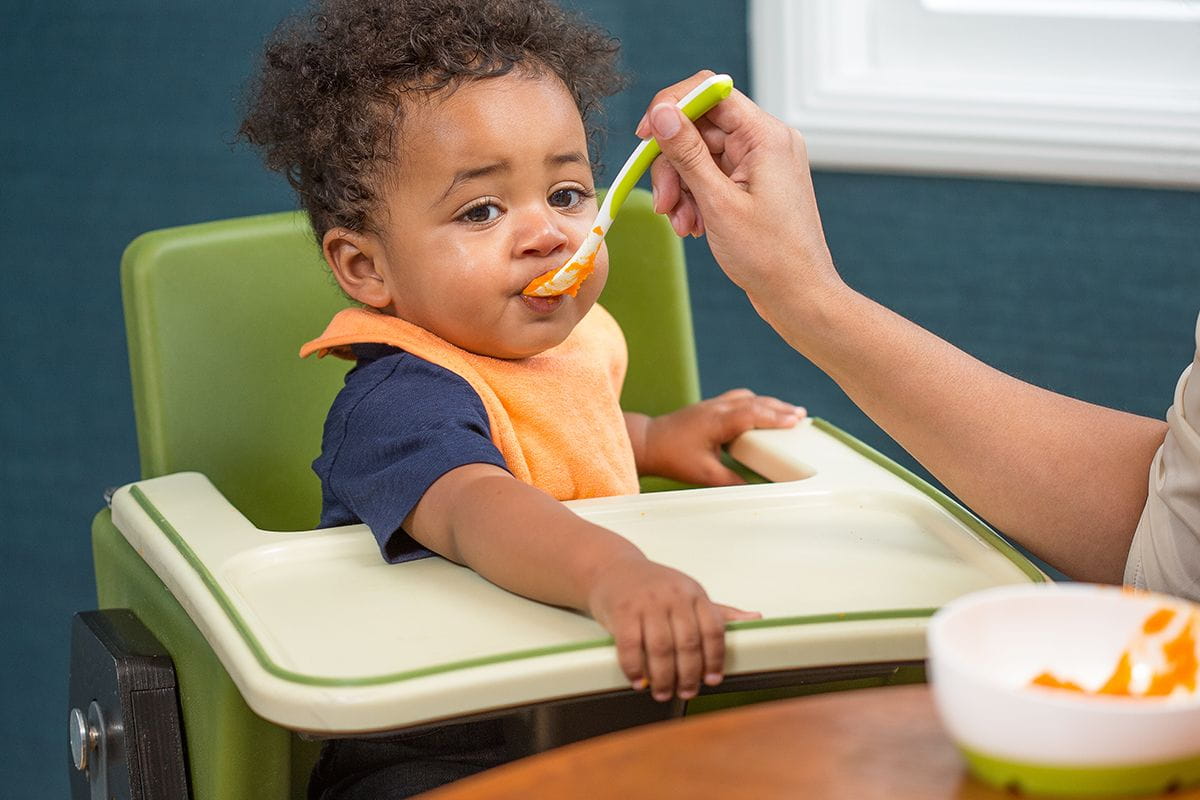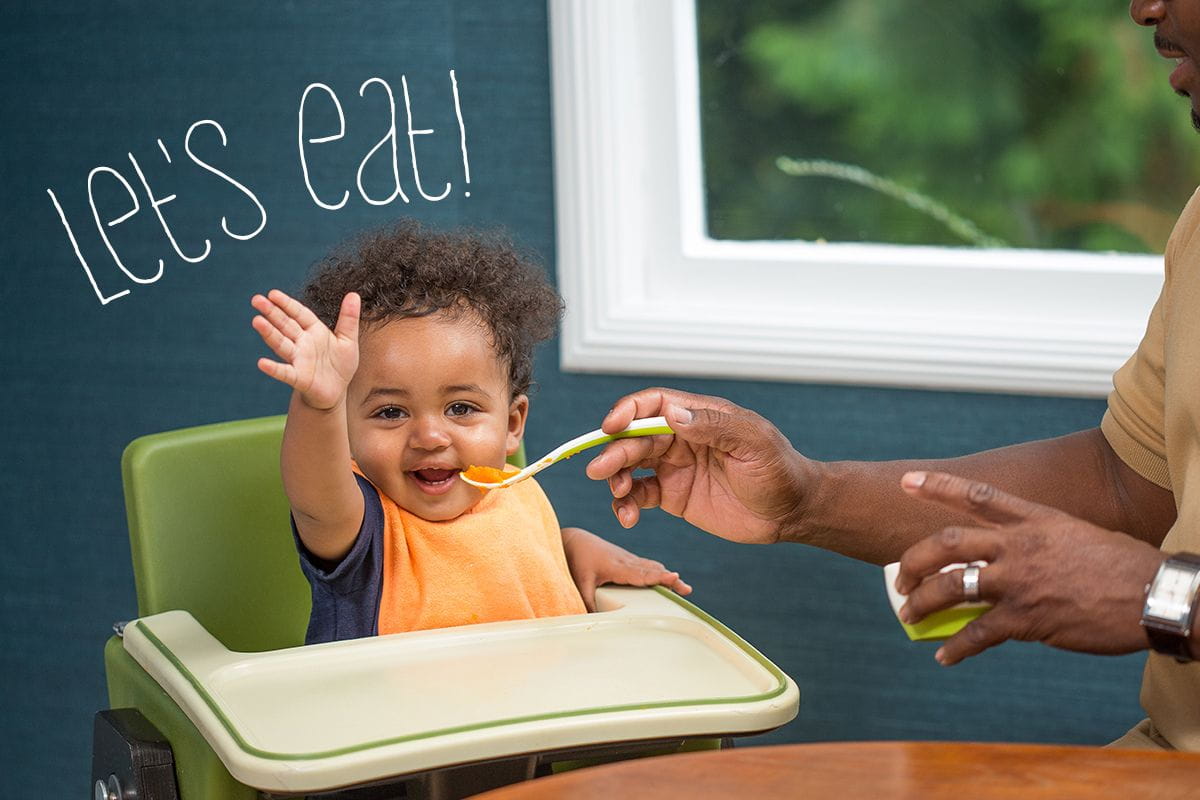First Eats for Your Little Sweet Potato: Root Veggie Baby Food

Hungry baby in the house? The arrival of fall and winter brings a bumper crop of root vegetables that are just right for his first forays* into the world of solid foods: sweet potatoes, yams, carrots, parsnips, rutabaga, turnips, and, yes, even beets. These tasty seasonal eats feature a lovely natural sweetness and an appealing velvety texture when puréed. They’re also great for digestion and loaded with vitamins and nutrients. The process for turning root veggies into baby food is super simple (see directions below) and even better, they’re typically downright cheap.
Bonus for busy parents who don’t have a lot of time to shop: If stored properly, root veggies can last a couple weeks or longer. Simply grab a bag of your favorites at the grocery store and put them away until you find time to cook!

When it comes to making root veggie baby food, you have lots of yummy options to choose from!** While tasty on their own, they also “play” well with others—when baby is ready for combos, blend up a root veggie medley or mix your favorite root with various fruits, grains, and proteins.
Also keep in mind that baby cuisine need not be bland. Talk to your doctor first, of course, but you should be able to safely add a number of spices and herbs in your little one’s first foods (popular choices include cinnamon, nutmeg, cumin, thyme, and turmeric). Exposing him to a variety of flavors early in life may give him a more adventurous palate later when he’s ready for the hard stuff.

Baby just taking his first bites? Don’t be surprised if he turns his nose up at those turnips—check out these guidelines for starting solids from the American Academy of Pediatrics.

In our centers, we embrace family-style eating—encouraging children to serve themselves teaches them important social skills (like passing items, sharing, being patient, and saying “please” and “thank you”) and how to listen to their own hunger cues. Allowing the Pre-K set to get in on the serving action can also inspire them to try new foods, like mashed rutabagas or roasted parsnips and carrots!
Of course, babies aren’t ready to even feed themselves, let alone dish up their own plate of purées. But watching you and his siblings engage in the serve-yourself process will give him a jump on learning good habits. In fact, sitting down to a family meal reaps heaps of benefits for children over time (think healthier choices, better vocabulary, and stronger self-esteem), so pull that highchair up to the table and have everyone dig in together!
ROOT VEGGIE BABY FOOD
Before You Get Started:
When selecting root vegetables, look for ones that are firm and free of cracks, bruises, blemishes, and soft spots. The skin should be smooth and have rich color.
Exact preparation (as well as cooking times and ideal cooking methods) will vary depending on the specific vegetable. Sweet potatoes and yams, for example, can be baked without having to peel them first. Rutabagas and turnips benefit from the added sweetness they get when roasted, while carrots, parsnips, and beets have the best texture when steamed or boiled. Our instructions below are for the simplest method (steaming/boiling), but if you want to use a different cooking method, a quick Internet search will fill you in on all the details you need.
The Steaming/Boiling Method:
Step 1. Wash and peel. While root veggies don’t top the list of produce prone to having pesticide residue, it’s always smart to play it safe. If possible buy organic versions, but either way, wash and peel your veggies before cooking. First rinse with cold water, using a veggie brush to scrub off any dirt, then peel and rinse again if needed.
Step 2. Chop. Dice your veggies into small chunks—this speeds up the cooking time and makes the blending process easier.
Step 3. Steam or boil. Place a steamer basket in a saucepan and add water until it’s just coming up through the holes. Add the veggies to the basket and steam over medium to medium-high heat until very tender, about 10–25 minutes (depending on the type of veggie). Alternatively, you can also boil the veggie chunks in a scant amount of water.
Step 4. Purée. Transfer the cooked veggies to a blender or food processor and purée until smooth, adding cold water as needed for a thinner consistency. Serve right away, refrigerate in an airtight container for up to three days, or freeze for up to three months (thaw overnight in the refrigerator when ready to eat). Throw away any leftovers in his bowl once he’s had his fill, as the process of eating transfers bacteria from your baby’s mouth to the food via the spoon.
*Check with your doctor before serving root vegetables or any other foods to your baby. Most little ones take their first bites between four to six months, but regardless of age, she should be able to sit in a high chair and have good head control. The standard advice is to start with single-ingredient purées—wait three days before introducing another food to confirm your baby isn’t experiencing an allergic reaction such as a rash, diarrhea, or vomiting. Never add salt or sweeteners.
**Carrots and beets (as well as spinach, green beans, and squash) contain higher levels of naturally occurring nitrates, which infants have a hard time processing, so chat with your pediatrician before putting them on the menu. Don’t forget that, just as with adults, beets can give your baby’s pee and poop a surprising reddish tint!





